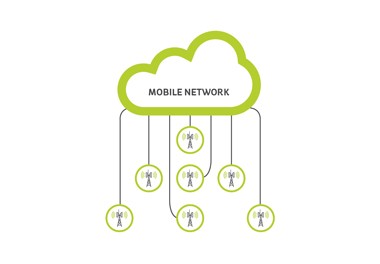
John Regan, Business Development, Strategy & Regulation Manager, ESB Telecoms
For those of us who are old enough to remember the turn of the millennium, you will nostalgically recall when a mobile phone did as it said it would do, allowing you to make and receive phone calls while you were on the move. Today, we all carry a very powerful mini-computer upon our person. These hand-sized devices have revolutionised the way we work and play – whether alone or with others. It is hard to know how society would have effectively functioned during the current pandemic without our technology keeping us connected. Most of us now expect that there can be an app for everything. The underlying expectation is that almost anything can be improved with a digital enhancement – if it is not there today, then somebody will surely think of it tomorrow.
Operating the Network
Very few people contemplate how this is all achieved in the background, that is unless you are one of those hard-working people who are keeping all of this operational. Managing networks of this type is not a simple task – especially when global internet traffic has tripled in the last five years. In 2021, data traffic levels had surged to such an extent that Global IP networks now carry the gigabyte equivalent of all movies ever made - every single minute. Not surprisingly, much of this is driven by mobile devices.
Since 2017, mobile devices have consistently accounted for 50% of global website traffic. This sounds like a huge amount of traffic (because it is), and that is before we add in all the person-to-person video calling and image sharing that we all engage in. All this additional traffic is a serious challenge for mobile networks.
In early mobile networks, your phone sent its data to a tower via a radio link and this tower then shipped the data further up the network via another radio link (the backhaul). All the other customer originating traffic from that tower was aggregated together with the traffic from your phone and shipped over the common backhaul circuit. You would often find multiple links in a backhaul chain – five or more links would not have been uncommon, particularly when trying to access rural areas. At each point on the chain, the network could split – one tower could have two or more downstream towers linked to it. Network maps resembled multi-generational family trees, and the sprawl got wider at every additional level. This was a practical solution at the time because the radio backhaul links were quite capable of carrying your compressed voice calls and the tiny amount of data from texts. But this was before people started streaming TV to their phones or downloading movies to their devices.

Traditional mobile network topology with resulting backhaul congestion
Fast forward to today, and you have a situation where the radio links between towers cannot carry their own traffic along with the traffic from additional sites downstream in the network. This challenge has happened at the peak point of network reach (number of tower sites), with a typical Irish mobile network having thousands of transmission sites. Throwing more radio links at the problem is an interim solution but only delivers a finite amount of scalability and is not a long-term answer when 5G is available to increase the amount of data across the network exponentially.

Fibre enabled mobile network with sufficient scalable backhaul
The obvious solution is to bring fibre optic solutions to telecoms towers. This gives a provider the ability to increase backhaul capacity in line with their subscriber’s requirements. But a typical supplier of fibre services does not have towers for rent, and specialist telecom tower providers are not telcos. This all makes for a fragmented and expensive solution – with one exception.
Our Role
ESB Telecoms is the only wholesale telecommunications company in Ireland that provides a complete connectivity solution for Irish mobile providers. With over 2000km’s of fibre deployed and 430 towers, ESB Telecoms deliver tailored offerings that allow mobile service providers to deliver tomorrow’s speeds to today's customers – supporting a seamless digital service from tower to data centre.
ESB Telecoms supply telecommunications infrastructure that has been engineered to last and are maintained with the same care and expertise that ESB brings to the electrical grid. ESB understand the needs of Irish people and how these can be met through the deployment of critical capital infrastructure – safely, sustainably and with the highest levels of availability. When looking for a supplier of infrastructure-based solutions, it is hard to ignore the track record of the ESB group.
Importantly, ESB Telecoms converged communications solutions are not just for mobile providers. Our converged tower and fibre offering has the perfect mix of urban and rural transmission locations nationwide to support traditional wireless providers and newer IoT networks. ESB Telecoms proudly enables other mission-critical networks such as emergency services, air traffic control and television and radio stations. While also helping rural wireless broadband providers re-engineer their networks to stay relevant in the market - addressing the dual challenge of increased broadband speed demands from their customers alongside the threat coming from the rollout of fibre optic networks to the home.
As ESB looks forward to our centenary later this decade, the team at ESB Telecoms are proud to still play a key role in providing services that benefit Irish companies and citizens, just as our predecessors did when they electrified the nation.
Talk to ESB Telecoms today. You never know, we just might electrify your business.
To find out more contact your customer relationship manager or email salesenquiries@esbtelecoms.ie
